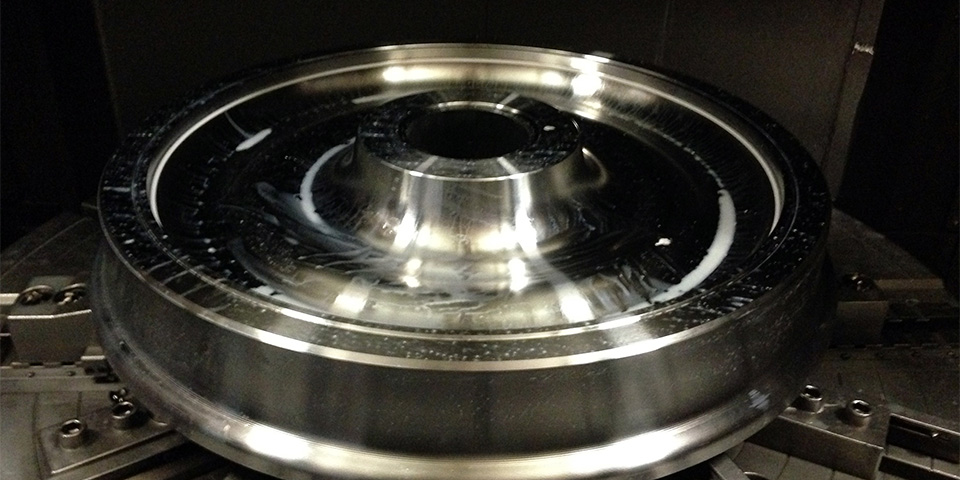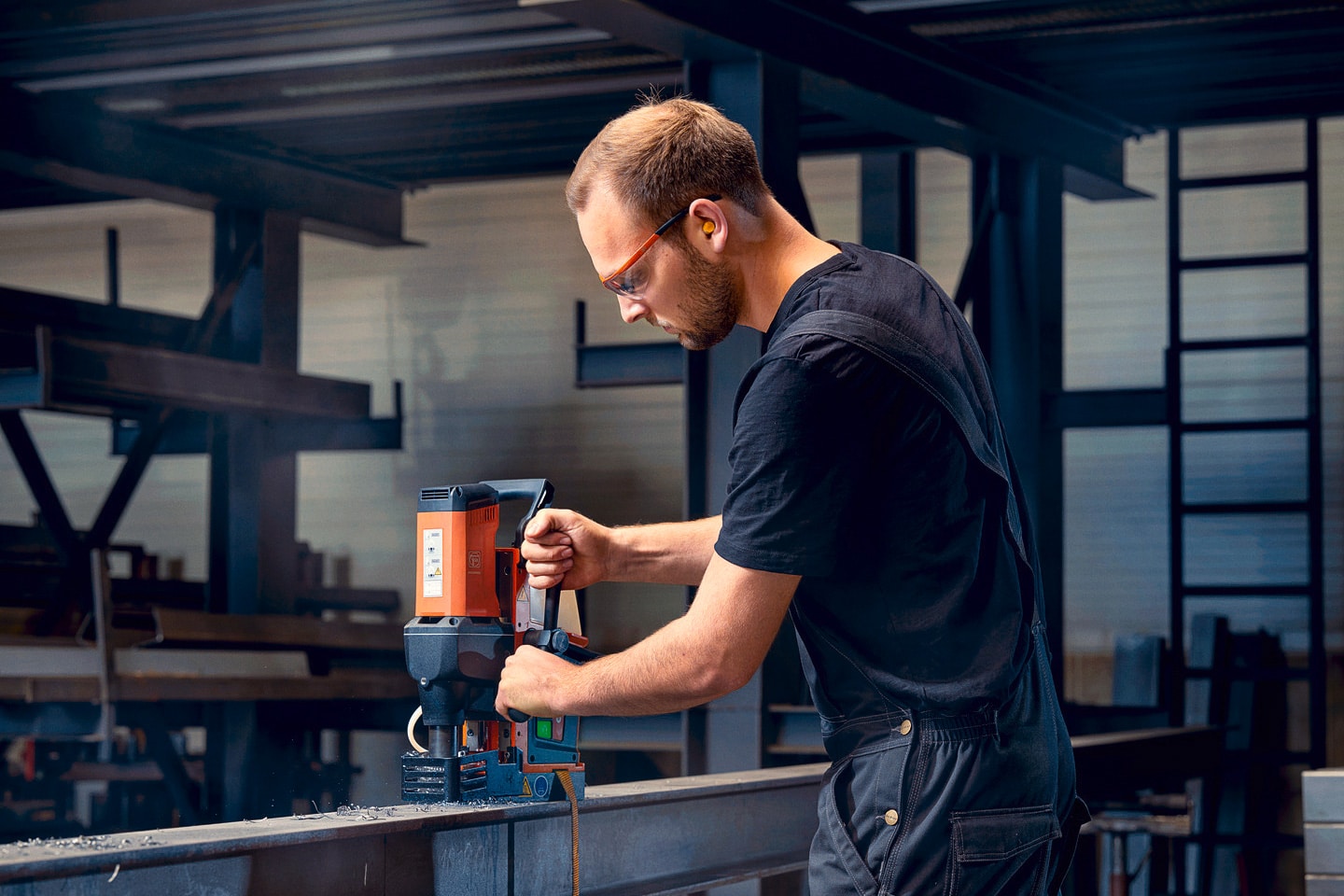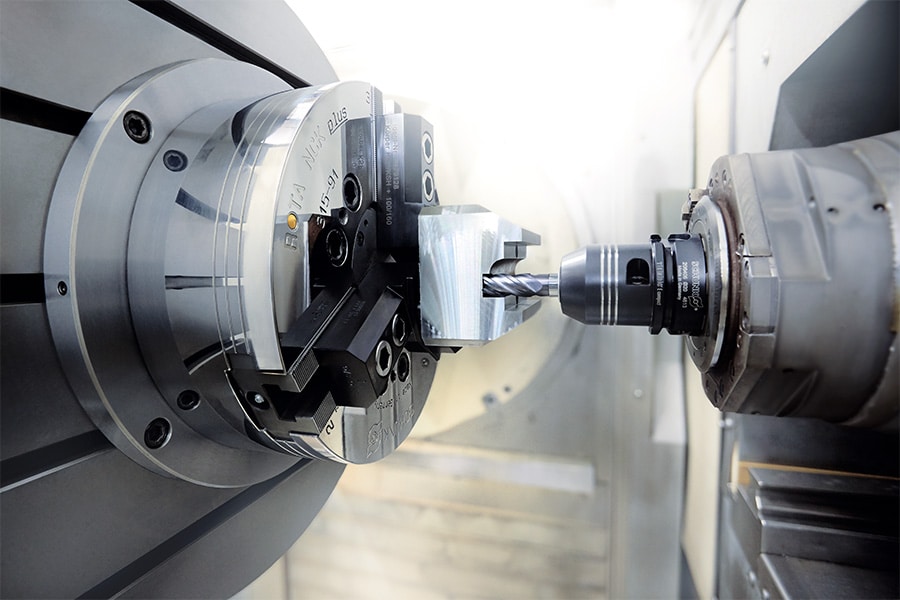
On the right track with dynamic milling
For the production of railroad components such as rails, wheels and other parts, as well as their maintenance and repair, many machining operations take place. Maximum reliability is achieved by using state-of-the-art tools, materials and machining techniques. The railroad segment has been a core business for Dormer Pramet for many years. The company offers its customers a wide range of machining tools, both for the production and maintenance of railroad equipment.
With an annual growth rate of 2.6%, the rail industry is growing steadily. More and more passengers today are choosing to travel by train because of its convenience, price, comfort and safety. The increasing demand for passenger and freight rail transportation is contributing to rapid growth in global investment in rail infrastructure. It is therefore essential for rail and train component manufacturers to provide the necessary products and services with a consistent level of quality, day in and day out.
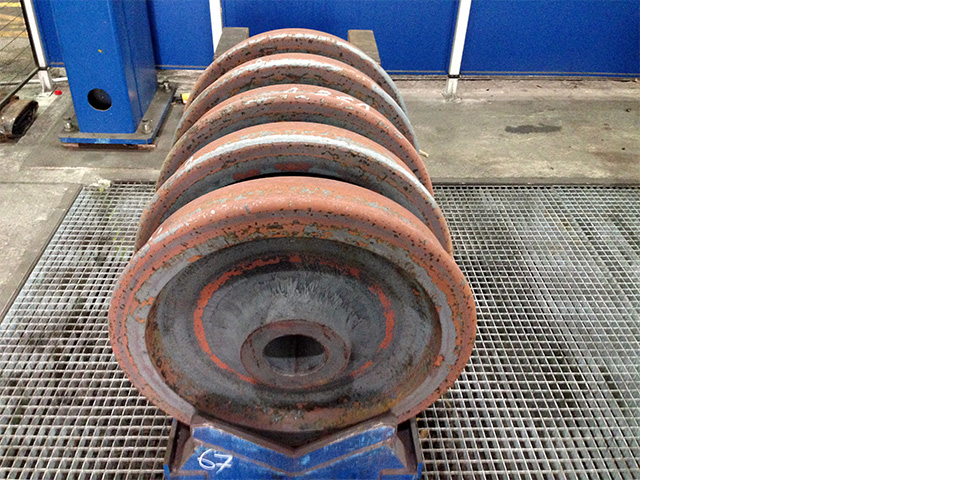
High accuracy ensures a perfect profile within set tolerances.
Dynamic milling for train track maintenance
Belgium and the Netherlands are also full of train rails that need regular maintenance. Railway specialist Gert de Vries of Dormer Pramet explains how this is done: "The most time-consuming method consists of using rail laying machines, which replace old rails with new ones. It is also possible to re-profile the existing rails by grinding, but this produces only a low depth of work and causes sparks, which can cause fire along the track. The currently rapidly emerging method is dynamic rail milling. Re-profiling a track without removing the rails provides significant savings in terms of time and cost." But achieving optimal results with this "mobile" application requires specialized equipment.
Specialized equipment needed
Dynamic milling is possible with specially designed trains running at a constant speed of 700 m/h. R350HT steel rails are highly wear-resistant with hardness between 900 and 1,200 MPa. As a result of passing trains, the surface hardness of the rail can increase to as much as 1,500 MPa. De Vries: "Two milling units are used for re-profiling the rails. The first unit pre-processes the surface and the second takes care of post-processing. The two units machine both rails simultaneously. The final rail profile and surface finish are taken care of by grinding units, while the metal chips formed during milling are transferred to a collection bin so that no residue is left on the rail. Another option is to use a truck that can run on road and rail by changing wheel types. This one has one milling unit on each side and therefore performs only the finishing operation."
A milling body for different rail profiles
Recently, Dormer Pramet became involved in train track maintenance in the Netherlands. A number of tracks were provided with a new profile by means of dynamic milling, using Pramet milling bodies with cassettes, and -hard metal change plates. "On the Pramet milling bodies, 22 identical cassettes were mounted for a particular rail profile. The high accuracy ensures a perfect profile within the specified tolerances. The Pramet cassettes contain both carbide change plates for the flat part of the rail profile and also of the round profile, that is a total of eleven change plates per cassette. The advantage is that with one milling body different profiles can be milled by changing the cassettes. Furthermore, fewer bodies are needed, which saves space in the workshop. When replacing the change plates, after reaching the tool life, one can pre-fit a set of cassettes with new change plates and thus resume production faster."
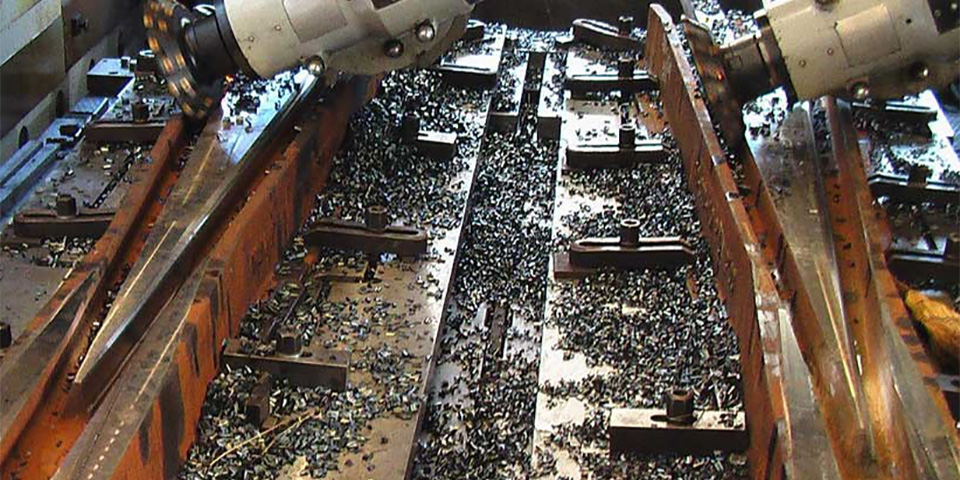
The advantage of Dormer Pramet's material is that different profiles can be milled with one milling body by swapping cassettes.
Ideal partner
These were mainly sections where heavy use and overdue maintenance required the removal of a lot of material. Due to the high intensity of track use, only a limited number of hours are available during the night for maintenance. Hence the increasing use of dynamic milling: one can mill deeper, chip more volume and provide more rails with a new profile. "Dormer Pramet's years of intensive contacts with manufacturers and suppliers have put us in the position of becoming the ideal partner to meet the growing demand for quality and reliability," de Vries summarizes. "Although we already have a large number of products in this segment, new ones are added every year. Each of these is extensively tested according to a long list of strict criteria. These include reliability in the machining process, tool life and productivity for the customer, optimum chip breaking, accurate size and stability and high surface quality."
Gamma built on 150 years of knowledge and experience
Dormer Pramet was created after the cooperation of the rotary tool manufacturer Dormer Tools and the points specialist Pramet Tools. The extensive product range is built on more than 150 years of knowledge and experience. The Dormer brand has been known worldwide for more than a hundred years as a leading manufacturer of solid metal and HSS tools. The range includes drills, cutters, taps, cutting plates and reamers, as well as countersinks, burrs, wire cutters and cut-off tools. The Pramet brand has been known for its carbide insert tools since 1951. Its product offering includes a wide range of insert tools for turning, milling, threading and drilling for the metalworking industry. Dormer Pramet's products can be found in a variety of industries from maintenance departments to the rail, automotive and aerospace industries.
